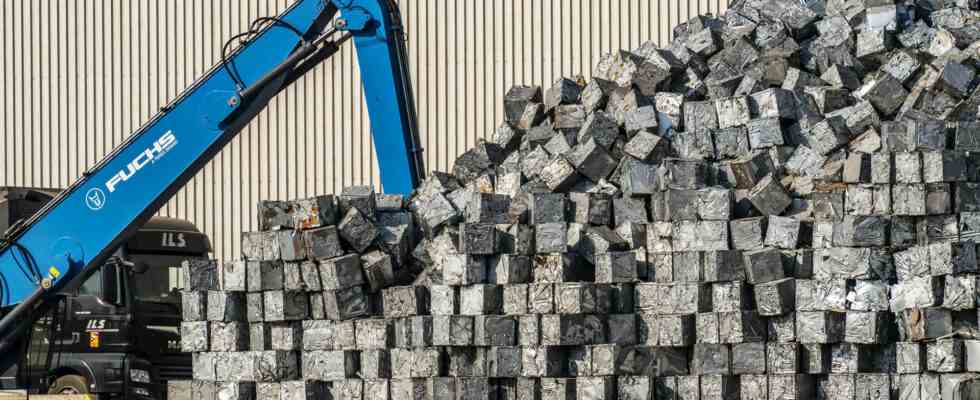Status: 04/25/2022 09:28 a.m
According to a study, the EU could close the bottlenecks in metals in the medium term through recycling. The demand for raw materials will increase sharply in the future in order to make the energy industry and transport sustainable.
According to an investigation, the EU is threatened with medium-term bottlenecks in the supply of metals such as lithium. This is the result of a study by the Catholic University of Leuven. “Electric vehicles, batteries, photovoltaic systems, wind turbines and hydrogen technologies all require significantly more metals than their traditional alternatives,” the experts said. The study was commissioned by the European association Eurometaux, which brings together non-ferrous metal producers and recyclers.
According to the study, the global energy transition is progressing faster than the number of mining projects to extract the necessary metals. For copper, cobalt, lithium, nickel and so-called rare earths, there could therefore be global supply bottlenecks from 2030. The experts underline that Europe only has a small window of opportunity to advance its domestic production. From 2040 onwards, a large part of Europe’s metal requirements could also be covered by recycling.
Aimed at long-term self-sufficiency
“Recycling is Europe’s biggest way to improve its long-term self-sufficiency and could meet 45 to 65 percent of Europe’s base metal needs by 2050,” the study says. With so-called rare earths and lithium there is the potential to achieve quotas of more than 75 percent.
According to the study, the demand for lithium is increasing by far the most. Global demand for the metal as a transitional commodity by 2050 is expected to be more than 2,000 percent of 2020 total global demand. But also for rare earths such as dysprosium (up 433 percent) or the heavy metal cobalt (up 403 percent), according to the information, a significantly higher demand can be expected.
Critical bottlenecks are imminent
With regard to Europe, the researchers calculate that 35 times more lithium, 7 to 26 times more rare earth metals and 3.5 times more cobalt will be needed to generate energy sustainably and make the EU climate-neutral by 2050 .
“Without an early supply of new primary metals and better recycling, there is a risk of critical bottlenecks that endanger Europe’s goal of a more autonomous, clean energy system,” said the KU Löwen. However, the study is limited by the fact that technological developments and changes in behavior can still influence the situation, but were not taken into account in the study.
become independent of Russia
The German Raw Materials Agency had already commented on this topic a few days ago: According to the experts, more recycling of raw materials could also make Europe less dependent on Russian imports. “We still see considerable potential in recycling, even if we are already doing comparatively well in Germany,” said Siyamend Al Barazi, head of the raw materials sector at the German Raw Materials Agency, the “Automobilwoche”. For copper, lead, aluminum and nickel, the recycling rates in Germany are already between 40 and 60 percent. Russia supplies around ten percent of the world’s nickel requirements.
According to him, Europe still has a lot of potential when it comes to raw materials. “In Finland, for example, there are nickel deposits, and there are also interesting lithium deposits in Spain, Portugal and Serbia.” The question is, however, whether such projects could be operated economically in a global comparison. It also costs time and money to fundamentally change established process chains.
China’s largest producer of rare earths
The Ukraine and Russia are particularly important suppliers for the European market, for example of aluminium, nickel or noble gases such as neon. The expert said that these quantities could not be replaced overnight by other suppliers. The German Raw Materials Agency is an institution subordinate to the Ministry of Economic Affairs. It analyzes and evaluates the international markets for mineral raw materials and fossil fuels.
China is the world’s largest producer of rare earths. Russia is one of the countries with the largest reserves, along with China, Vietnam and Brazil.

